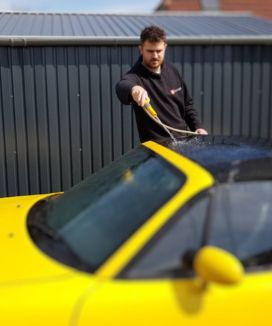Investing in Undesirable Classic Cars: Hidden Gems
Table of Contents
Table of Contents
Picture this: You’re cruising down the highway in your very own classic car, wind in your hair, the purr of the engine harmonizing with the music of the past.
But what if I told you that owning a piece of automotive history doesn’t have to break the bank?
That’s right, my friends, there’s a secret to investing in classic cars that most enthusiasts overlook – the ‘undesirable’ models. You may ask, “Why would I want an ‘undesirable’ car?”
Well, the answer is simple: when it comes to investing, sometimes it pays to zig when everyone else zags.
In this article, we’ll take you on a journey to discover the hidden treasures of the classic car world, focusing on those models often overlooked by collectors.
We’ll show you how, with a little patience, creativity, and persistence, you can turn these unloved machines into a rewarding investment.
And the best part? This strategy is perfect for those with limited disposable income, allowing you to enjoy the thrill of classic car ownership without breaking the bank. So buckle up, and let’s get started!
The Appeal of ‘Undesirable’ Classic Cars
You might be wondering, “What makes a car ‘undesirable’ in the first place?” Well, it’s usually a combination of factors. Sometimes, it’s due to outdated styling or unpopular design choices. Other times, it’s because of poor performance or an unfortunate reputation for reliability issues.
And occasionally, it’s simply because a car was overshadowed by a more popular sibling in its heyday. Whatever the reason, these misfit models end up with a “less-than-stellar” reputation, which can lead to some serious bargains for savvy investors.
So, how do these factors create unique investment opportunities? Well, for starters, the low demand for these cars often means they can be scooped up for a fraction of the price of their more sought-after counterparts.
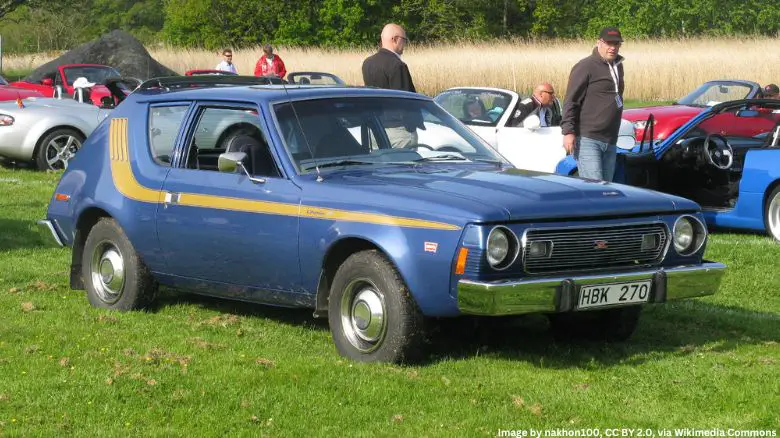
This means you get to invest in a classic car without having to sell a kidney on the black market (tempting, but not recommended).
Additionally, because these cars are generally overlooked, they can be rare finds, which can drive up their value if and when they suddenly come back into vogue.
Now, for some real-world examples of ‘undesirable’ models that have increased in value over time:
- The Porsche 914: Once considered the “poor man’s Porsche,” the 914 was overshadowed by the more popular 911. However, in recent years, this mid-engined, targa-topped sports car has experienced a resurgence in popularity, with values steadily climbing.
- The Ford Pinto: Notorious for its alleged tendency to explode upon rear impact, the Pinto has long been the butt of many automotive jokes. Yet, its quirky design and sheer notoriety have made it a cult classic, with well-preserved examples fetching increasingly higher prices.
- The AMC Gremlin: With its polarizing design, the Gremlin was an easy target for ridicule. However, its oddball looks and rarity have turned it into a sought-after collector’s item, leading to a surprising increase in value over the past few years.
As you can see, even the most unlikely of classic cars can experience a renaissance, making them a potentially lucrative investment. So don’t be too quick to dismiss those automotive underdogs; they might just have their day in the sun after all.
Identifying the Right Investment
Now that you’re all revved up about the idea of investing in ‘undesirable’ classic cars, let’s discuss how to separate the clunkers from the potential goldmines.
Here are some tips for spotting an overlooked classic with growth potential:
Rarity
While it may seem counterintuitive, sometimes the very thing that made a car undesirable in its day – limited production numbers, strange design choices, or niche appeal – can make it more valuable down the road.
Keep an eye out for low-production models or variations that weren’t widely embraced at the time.
Historical significance
Cars with an interesting backstory or connection to a notable event, person, or trend can become more sought-after over time.
Look for models with a unique place in automotive history, such as those tied to famous races or significant technological advancements.
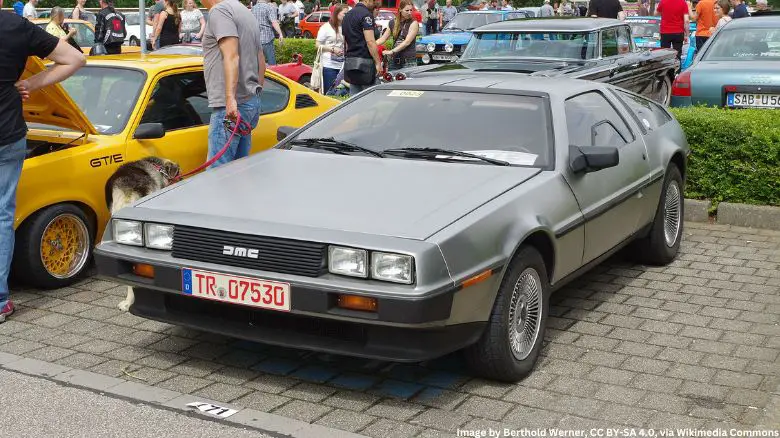
Potential for restoration
If a car is in rough shape but has solid bones, it might be a prime candidate for a restoration project.
While this can require a significant investment of time and money, it can also lead to big returns if the end result is a beautifully restored and rare classic.
To find these hidden gems, you’ll want to do your homework. Research various makes and models that have been overlooked or undervalued and learn about their history, production numbers, and any unique features that might make them more collectible.
Some resources to help you in your quest include:
- Classic car forums: These online communities are a treasure trove of information and can be a great place to learn about lesser-known models and ask questions of fellow enthusiasts.
- Local car clubs: Joining a local car club or attending their events can help you connect with like-minded individuals who may have insider knowledge about the current market and potential hidden gems in your area.
- Car shows and auctions: Attending car shows and auctions can provide valuable insight into what models are currently in demand and which ones are being overlooked. Plus, you might just stumble upon the perfect ‘undesirable’ classic for your collection!
- The Car Investor newsletter. Sign up here to have the latest data and market trends delivered to your inbox every month, so you can spot emerging trends before anyone else.
By doing your research and keeping an open mind, you’ll be well on your way to identifying the right investment in the world of ‘undesirable’ classic cars.
The Benefits of Investing in ‘Undesirable’ Classic Cars
Now that we’ve covered how to identify and find these hidden gems, let’s dive into the benefits of investing in ‘undesirable’ classic cars. Spoiler alert: there are quite a few!
Potential high returns on investment
One of the most enticing aspects of investing in ‘undesirable’ classic cars is the potential for significant returns on investment. Due to their initial low cost, you can often purchase these hidden gems at a fraction of the price of more popular models.
This affordability presents a more accessible entry point into the classic car market, particularly for those with limited funds.
As demand for these overlooked models begins to grow, their value can appreciate rapidly.
While it’s important to remember that there are no guarantees when it comes to investing, and appreciation can be unpredictable, the possibility of seeing a substantial return on a smaller initial investment is certainly enticing.
For example, let’s say you manage to acquire an ‘undesirable’ classic for $5,000, and over the course of a few years, its value increases to $15,000. That’s a 200% return on your initial investment.
Compare that to buying a more popular classic car for $50,000 and seeing its value increase to $60,000 over the same period, which represents a 20% return on investment.
While the dollar value increase is the same, the percentage return is significantly higher in the case of the ‘undesirable’ classic, and the initial outlay is significantly less.
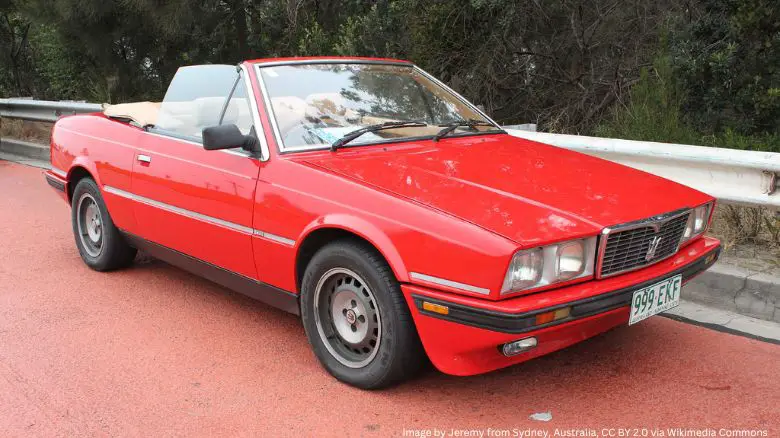
Furthermore, as the market for classic cars continues to evolve, there’s always the chance that an ‘undesirable’ model may suddenly become sought-after or trendy, leading to a surge in value.
This could result in a windfall for those who were savvy enough to invest in these unloved classics before they hit the mainstream.
Niche markets and collectors
While ‘undesirable’ classic cars may not have the widespread appeal of more popular models, they often possess a unique allure that resonates with specific niche markets and collectors.
These aficionados appreciate the idiosyncrasies, quirks, and lesser-known histories of these underappreciated models, and their passion can drive up demand and value.
There are several factors that can contribute to a car’s appeal within niche markets:
Unconventional design
Some enthusiasts are drawn to cars with unconventional or polarizing designs that make them stand out from the crowd.
The AMC Gremlin we mentioned earlier, for instance, has gained a dedicated following precisely because of its distinctive appearance, which many consider a symbol of 1970s Americana.
Cult following
Some cars may develop a cult following due to their association with pop culture, movies, or TV shows. The Ford Pinto has become a cult classic partly because of its infamy and the various jokes surrounding it.
As a result, collectors who appreciate the car’s notoriety are willing to pay a premium for well-preserved examples.

Mechanical or engineering quirks
Certain collectors are drawn to vehicles with unique mechanical or engineering features that are no longer found in modern cars.
Examples include the Citroën DS with its innovative hydropneumatic suspension system, or the Wankel rotary engine found in the Mazda RX-7.
Limited production runs or regional exclusivity
Some ‘undesirable’ classic cars may have had limited production runs, making them rare and highly sought-after within specific circles.
Additionally, models that were exclusive to a particular region or market can pique the interest of collectors who value geographic rarity.
By catering to these niche markets and collectors, you can potentially tap into a dedicated and passionate group of buyers who are willing to pay top dollar for your once-undervalued classic. This focused demand can lead to a surge in value, transforming your ‘undesirable’ investment into a prized possession within these specialized communities.
Personal enjoyment and hands-on experience
Investing in ‘undesirable’ classic cars isn’t solely about financial gains; it can also provide immense personal satisfaction and enjoyment.
Embracing these automotive underdogs offers a unique opportunity to immerse yourself in the world of classic cars, develop new skills, and experience the gratification of restoring and preserving a piece of automotive history.
Here are a few ways that personal enjoyment and hands-on experience factor into the equation:
Restoration projects
Tackling the restoration of an ‘undesirable’ classic car can be a rewarding and educational experience. As you work on bringing the vehicle back to life, you’ll learn about its engineering, design, and history.
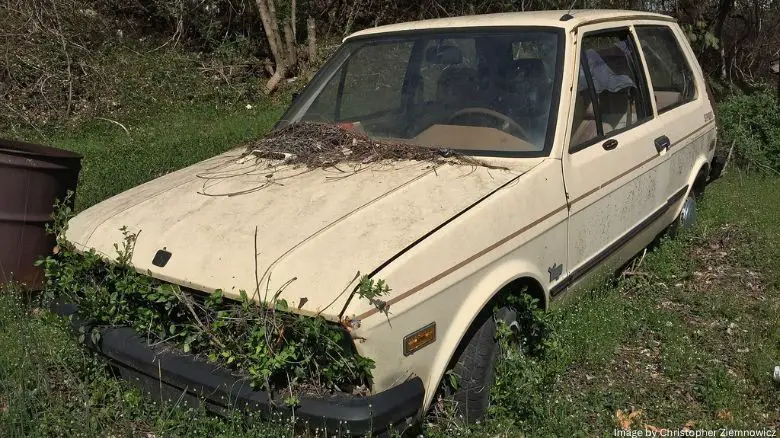
You’ll also develop new skills, such as bodywork, painting, mechanical repairs, and upholstery work. The sense of accomplishment that comes from transforming a neglected car into a thing of beauty is truly unparalleled.
Driving experience
Once you’ve completed the restoration process, you’ll have the pleasure of driving a unique classic car that stands out from the more common models.
The driving experience of older vehicles often differs significantly from modern cars, offering a visceral and engaging connection to the road that’s hard to replicate in today’s vehicles.
Plus, there’s something to be said for the attention and admiration you’ll receive from fellow enthusiasts when cruising around in your one-of-a-kind ride.
Community involvement
Owning an ‘undesirable’ classic car opens up opportunities for engagement with like-minded individuals who share your passion for automotive history and preservation.
By joining car clubs, attending shows, and participating in online forums, you’ll forge connections with fellow enthusiasts, share knowledge, and create lasting friendships within the classic car community.
Emotional connection
There’s often an emotional aspect to investing in ‘undesirable’ classic cars. It could be a sense of nostalgia for a particular era, a personal connection to a specific make or model, or simply the desire to give a forgotten car a second chance.
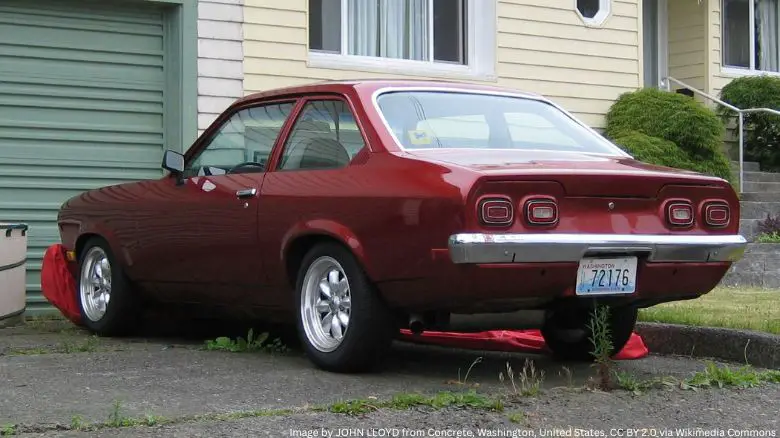
This emotional investment can enrich your life and create a deeper appreciation for the automotive world.
The personal enjoyment and hands-on experience gained from investing in ‘undesirable’ classic cars can be just as valuable as the potential financial rewards.
The opportunity to learn, create, and connect with others through these unique vehicles offers a level of satisfaction that transcends mere monetary gains and makes the journey truly worthwhile.
Overcoming Challenges and Risks
While investing in ‘undesirable’ classic cars comes with numerous benefits, it’s essential to recognize the potential challenges and risks involved.
Fortunately, with the right strategies in place, you can mitigate these risks and improve your chances of success.
Parts
Sourcing parts for these hidden gems can be a major obstacle, as they may not be as readily available as those for more popular models.
To overcome this challenge, try networking with fellow enthusiasts and exploring specialty suppliers and salvage yards. In some cases, you may even need to fabricate custom parts.
Restorer Skills
Finding skilled restorers is another challenge you may face. Restoring an ‘undesirable’ classic car may require specialized knowledge and skills that not all restorers possess.
To locate skilled professionals, network within the classic car community, and research restorers with positive reviews and testimonials.
An Unpredictable Market
As with any investment, the classic car market can be unpredictable. The value of your ‘undesirable’ classic may not appreciate as you hope.
To minimize this risk, consider diversifying your investments and making your purchase of an ‘undesirable classic’ part of a balanced investment portfolio.
Ongoing Costs
Restoring an ‘undesirable’ classic car can be expensive, and it’s crucial to ensure you don’t overcapitalize on your investment.
To manage costs, set a realistic budget before embarking on a restoration project and consider doing some of the work yourself if you have the skills and knowledge.

By being aware of the challenges and risks associated with investing in ‘undesirable’ classic cars and implementing the strategies outlined here, you’ll be better equipped to navigate this exciting and potentially rewarding market.
Summing Up the ‘Undesirable’ Classic Car Journey
Investing in ‘undesirable’ classic cars presents a unique and exciting opportunity for those looking to enter the classic car market on a budget.
By focusing on these overlooked models, you can potentially reap significant returns on investment, cater to niche markets and collectors, and enjoy the personal satisfaction that comes from restoring and preserving a piece of automotive history.
However, it’s important to be aware of the challenges and risks associated with these investments, such as sourcing parts, finding skilled restorers, market volatility, and managing restoration costs.
By employing smart strategies like networking with fellow enthusiasts, diversifying your investments, and setting a realistic budget, you can mitigate these risks and maximize your chances of success.
So, don’t shy away from the ‘undesirable’ classics; embrace their quirks and unique appeal, and you just might uncover a hidden gem that delivers both personal enjoyment and financial rewards.
ABOUT THE AUTHOR
Adam Chinn writes about the intersecting worlds of classic cars, driving pleasure, and smart investment strategies. Starting his journey at 26, he’s proven that one doesn’t need to be wealthy to begin investing in classic cars.
Adam’s insights have been recognized on platforms such as MoneyInc, Swagger Magazine, and Top Speed.
Your journey to smarter car investments starts here.
The latest classic car data analysis, news, and expert articles delivered straight to your inbox.
- Take the guesswork out of classic car investing
- Get the tools and strategies you need to take action
- Learn the market inside-out
- Make informed decisions with confidence
Register now to see the best and worst performers, every month
You can unsubscribe at any time


